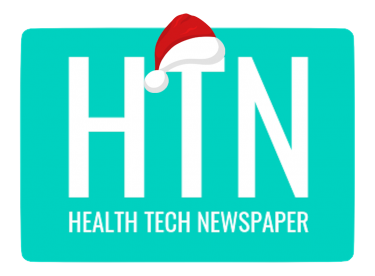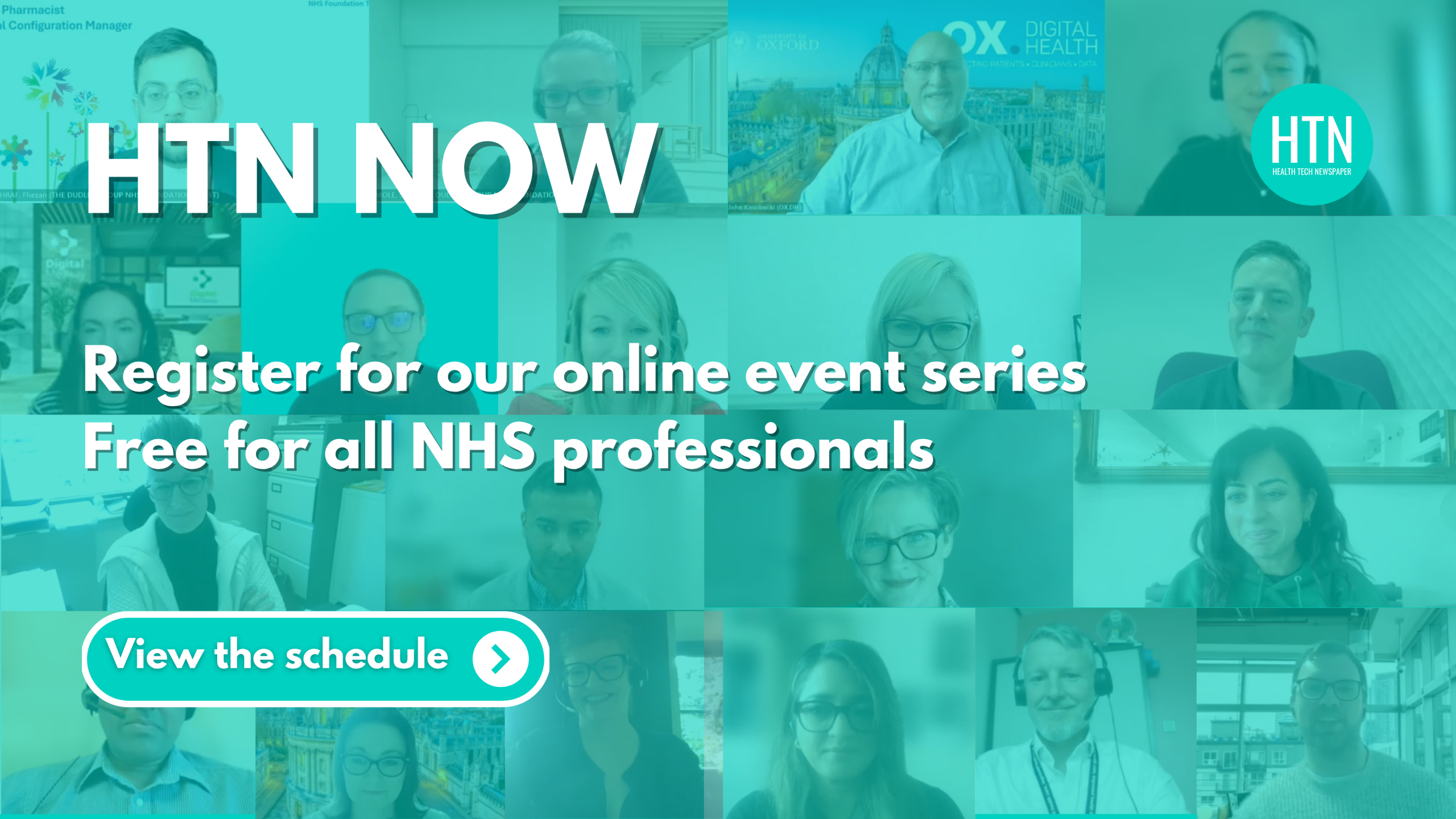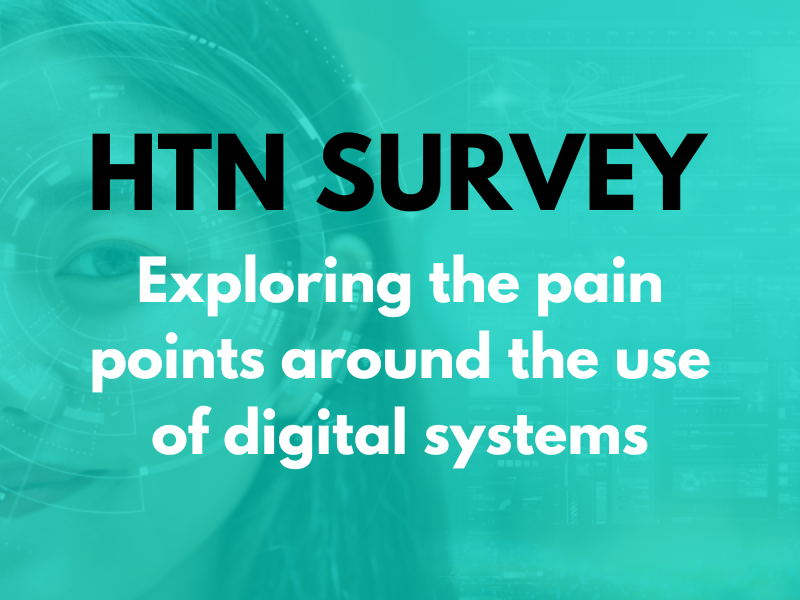A recent HTN Now panel discussion explored EPR customisations for the frontline and how digital transformation can support the direction set in the 10 Year Health Plan. We discussed optimisation, challenges and key learnings from success stories shared by our experts.
Panellists included Doctor Stephen Jones, principal clinical psychologist at Sheffield Children’s Hospital; David Wong, associate professor of health data science and health informatics at Leeds University; Mark Simpson, digital innovation leader at Leeds Community Healthcare; and Michael Odling-Smee, CEO at Aire Innovate.
How customisations can help organisations meet targets
After some brief introductions, our panellists began by tackling the primary topic at hand – how customisation can help with meeting targets outlined in the 10 Year Plan. Michael took on this question, explaining how the 10 Year Plan is a “fantastic vision of where we want to get to and it’s got some really aspirational goals”. However, he also noted that it can be difficult for organisations to understand what the plan means for them, “because it’s less clear on the how and the when. And that’s coupled with the fast rate of change in the technology space, with areas like AI developing quickly. So, I can understand not knowing where to start.”
Michael went on to explain how this has impacted thought processes at Aire lnnovate: “10 years is a long time. It’s potentially a long time in the political world and it’s definitely a super long time in the technology world. In 10 years’ time we could have, for instance, domestic robots that are recording our vital signs while we’re at home and maybe if they see that we’re deteriorating, helping coordinate our referrals or something like that.” He noted how those sorts of developments would “massively change the way healthcare is delivered” but that ultimately “it’s an unknown future.”
With all this in mind, Michael suggested looking at customisation and tools that can help in the short term but also continue to grow and change as the landscape keeps evolving. He also noted benefits of maintaining both a health delivery perspective and technology perspective. “In reality, we’ve all collectively brought in lots of applications that don’t necessarily talk to each other and created these data islands. And because of this, the day-to-day life of the clinician on the frontline gets a lot harder.”
Michael explained that in order to avoid this, there needs to be an outlook change: “Fundamentally, we believe in solutions that can fill in the gaps in current capability. They don’t necessarily need to be a new EPR, but they’ve got the characteristics of systems that can help, not just for one use case, but for lots of use cases.” He emphasised the importance of interoperability and sharing data between systems, noting that having “flexible systems that can work with you as you go on your journey, means you don’t necessarily need to wait to optimise, because you can carry on adjusting along the way.”
Use case: Sheffield Children’s Hospital
Next, Stephen took us through some of the key learnings he’s taken from implementing Aire Innovate’s platform at Sheffield Children’s Hospital. “I’m coming at this from a clinician-first perspective,” he said, before going on to explain, “One of the things that we started to realise was that there were quite a lot of gaps in how our service runs and the data that we collect and how that might work. But what we didn’t know was how that can then fit within digital systems because we didn’t know what was possible a lot of the time.”
The team realised that they had already recorded a lot of patient outcome measures through questionnaires, helping to determine care within their mental health services, but that there was a “complete lack of consensus on how those questionnaires were collected or which measures to use. And so everyone ended up doing their own thing, which makes it incredibly difficult to then create datasets to move the practice forward and enhance research.”
Stephen echoed what Michael had said about creating data islands, noting how they “probably exist in every paediatric hospital and mental health service in the country”. When Stephen and his team began to look into the different e-systems being used within the trust, they found that the IT department could “sort of make something work and that was the problem. There was always something missing and something that didn’t quite work for that particular use case. It didn’t quite fill that gap and if it did, it would be done in a compromised way.”
With this in mind, the team began to talk to different companies about what might be possible in terms of improving those systems and processes, especially when it came to recording outcome measures and storing data. “The problem was that the solutions that came up were either too big in scope or too small. A lot of them were more hospital-wide, taking care of a high volume of people, which was the only way to make it cost-effective. Ultimately, that’s useless for a lot of paediatric centres where you have a very small district general hospital with maybe only one professional and 50 kids a year. It just doesn’t scale. And it’s not that it can’t scale big enough, but it can’t scale small enough to be able to make it effective in different contexts.”
Stephen and the team then discovered that many other companies could potentially build something completely from scratch, which he said, “sounded great but also carries inherent risks. And we don’t want to pay for something that ultimately doesn’t quite work.”
As a result, Sheffield Children’s Hospital decided to work with Aire Innovate’s platform, allowing them to “automatically send out outcome measures to young people and families remotely, via e-mail or via text.” Sharing one of the main benefits of using this system, Stephen highlighted, “It can be customised by the clinician in terms of what’s being sent out and it has the scalability we need, which was always key to the process.”
He also recognised the importance of regular communication, something that was offered by Aire Innovate. “We have two-weekly cycles of meetings and that helps to keep the momentum going because it’s really easy to let things drift and build. So, to be able to have that open communication where we ask what’s possible and how certain elements work has really been beneficial to us.”
Now, the team at the children’s hospital are at a point where they can start thinking about using the system with patients. “And that will provide some very tangible effects, because clinicians won’t need to complete any outcome measures with families during their sessions. Instead, they get an extra 5-10 minutes of actual clinical contact time, with a text or email being sent out automatically afterwards.”
Use Case: Leeds Teaching Hospitals
David then took us through the project he’s been working on with Leeds Teaching Hospitals. “Infrastructure is really a key thing in healthcare. You can do some really clever things with data, but if you can’t access the data, then it doesn’t matter how clever your system is. And that’s really the starting point of this project.”
Going into more detail on the project, David shared, “It was funded by Innovate UK and led by Aire Innovate and an anaesthetist at Leeds Teaching Hospitals Trust. The problem identified was around pre-operation assessment, where clinicians need to make sure that patients are in a fit state before surgery. And that’s typically done manually. The information given on the patient helps to inform when to schedule surgery and any planning post-surgery.”
Because the process was manual, the anaesthetist leading the project began to wonder if there might be a semi-automated or automated way to do it instead. “He realised that a lot of that information doesn’t come from the hospital, but from primary care and getting data from there can be tricky. As already mentioned, transferring data between different parts of the healthcare system is easier said than done. So, what Innovate did, which is really unique, was to deal with that pipeline for us, enabling us to use data from primary care.”
Accessing data can “take a heck of a lot of time,” David shared. “And if we introduce a new system that’s not already integrated into our EPR, then that’s an additional challenge we have to take on too. Aire Innovate was able to smooth out that pipeline for us.” Explaining how the system works, he said, “We used information that we knew would be commonly available. Such as the operation needed, a patient’s age and gender, their medications list and we threw this data into a machine learning algorithm. What this allowed us to do was to accurately identify those who are at high risk and low risk.”
David then touched upon some of the challenges often encountered by using risk scores, noting, “They often look like they’re going to work really well, but as soon as you move to another site, they fall apart and the reason for that is multifaceted. It’s often that different hospitals do things in slightly different ways, or they record their data in slightly different ways.” To avoid these problems, the team decided to validate externally. “We trained our risk prediction model using Leeds Teaching Hospital’s data on around 100,000 patients and then tested it on data from Bradford and found that it performed pretty similarly across the different sites.”
On where the trust and Aire Innovate are now, Michael explained, “We’re just going through the NHS England accreditation process so that we can roll it out, not just for Leeds or other nearby organisations, but across the whole country. We’ve already digitised some of the pre-op processes with other customers and now we’re adding the risk stratification algorithm to that.” He mentioned interoperability as a key facet too, adding, “All these elements are great, but if they’re standalone and they don’t fit within the clinical workflow, then it’s not that much use. It’s not just about having smart tools, it’s also about making sure they incorporate well and make sense for everyone.”
Use case: Leeds Community Healthcare
Mark shared his key learnings from a project at Leeds Community Healthcare, stating, “Our work with Aire Innovate started with a smaller version of what Stephen and his team are currently working on, but in our dietetics team. And the result that came from that absolutely blew me away. The patients loved it and we ended up being able to rewrite certain pathways because of its popularity.”
Providing further detail around the partnership with Aire Innovate, Mark shared, “We’re using their forms across the trust now, but the project that’s still ongoing is the use of Aire Innovate’s solution for referral forms in the Leeds mental well-being service”. He noted how this came as a request from their commissioners, who had highlighted some significant blockers to access. “We all know that mental health care can be patchy and look different in different places. So, just getting the referral sent and then getting the relevant information was quite a bottleneck for us.”
Because of this bottleneck, Aire Innovate built a digital version of the referral process. “It couldn’t be met through the current EPR, so the commissioner suggested speaking with Michael and the team at Aire Innovate,” Mark said. “As a technical piece of work it was huge because our Leeds mental well-being service has seven different providers that have all come together under one banner. So, they all have their own pathways. And all of those pathways had to be mapped so that the referral form could take patients to the relevant areas.”
As an example, Mark explained, “If a patient indicates that they need really urgent mental health support, the self-referral stops and guides them to the best pathway, such as the crisis team. And if they get through to the end of a particular pathway, it redirects them, dependent on their answers, to relevant self-care options.” He shared that the solution has been in place for over five years and is frequently updated depending on what NICE guidance says.
How these projects align with the 10 Year Plan
Coming back to the main topic of discussion, Michael considered how each of the projects shared have aligned with targets set by the 10 Year Health Plan. “The issues outlined in the 10 Year Plan aren’t new to us,” he began. “We’ve been trying to solve these challenges across health and care for decades and I don’t think we should give up on that vision. But for me, it’s about not being too afraid to get going, to identify where those gaps and bottlenecks are, as well as the administration chores like Stephen alluded to and getting going with the solutions.”
Michael went on to say, “We’ve kind of got a set of digital Lego bricks. Instead of writing code from the outset, you can quickly build different elements to solve varying problems. And that’s how we built the tools that we’ve been working on with David, Stephen and Mark.” He noted the benefit of this approach is that you can “deliver great outcomes for patients, within clinical safety parameters, while continuing to evolve as you learn more”.
Michael also explained how using tools that work well with existing systems, including your EPR, can “really add value in the short term”, while also helping you to meet some of those core challenges set out in the 10 Year Plan. “I imagine most trusts know where their pain points are and could almost instinctively write down what those top ten challenges are and then get going. For me, that’s the most important step.”
From a community perspective, Mark said that it’s just as important to look at pain points from an organisation perspective as it is from a clinician perspective. “I’d love to see both of those addressed at the same time with the same fervour,” he shared. “In my team, we like to go out to services and start the conversation, asking people if they can define their problem. And often, the definition of the problem does not end with the need for a digital tool, it actually ends with the need for a conversation with a partner, some process improvements, etc.”
Mark then emphasised the need to get the foundations of their IT system correct first as well, “particularly in the community where WiFi can be patchy. There are places in Leeds that are still relatively out in the sticks, so getting out there and not knowing if your internet’s going to work is a bit of a risk sometimes.”
For David, “Defining the problem and really analysing the problem is tricky. And the reason for that is that some folk often have an idea of where the pinch points are in the system from their perspective, but there’s often a lot of heterogeneity in terms of what’s going on.” Using WiFi as an example, David explained, “When I’ve worked at a previous trust, they would say they had WiFi coverage everywhere. But when we actually went into every corner of the hospital, that wasn’t quite true. So, it’s super important that we find the problem and really figure out what’s happening on the ground.”
In terms of using AI, he highlighted how there are still biases to consider when entering data. “The biases are based on how people work and how digitally capable they are. So, one of the challenges to be aware of, particularly for AI, comes from looking at who’s engaging with the solution.” Providing further insights into this, David added, “There’s an immediate problem in that maybe we’re only tailoring our solutions to those who are more tech savvy and not considering other capabilities. Perhaps the way around that is to make a suite of solutions. But then we must be aware that the digital data we’re collecting might embed issues further on. So, there are a whole bunch of problems with AI, and lots of it is hidden under the surface. It only really becomes apparent when you understand processes.”
Final thoughts
The panel finished by leaving us with some key takeaways, starting with Mark who said, “We have been enhancing our EPRs with extra customisations for some time now and the process is always easier when done with consideration and thought about how it’s going to fit in with your existing system”. David reiterated this point and suggested the best way forward is to “carefully define your problem and then carefully evaluate the solution”.
For Stephen: “Defining the gap within your service is one thing, but you should also consider if your solution is scalable in other areas. Can you see a world in which you could drop this solution into another trust and fill a gap there? If we can do something in one place that is then transferable, then that should be the goal you work towards.”
Finally, Michael added, “Collectively we need to recognise that it’s a journey. It’s not like a buyer system where you install it, turn it on and you’re done. Everything’s a journey and everything’s continuing to evolve. You need something that doesn’t add to the burden of clinicians but instead really fits in with that ever-evolving picture and your existing estate.”
We’d like to thank Mark, David, Stephen and Michael for sharing these insightful use cases and offering their thoughts on this topic.






